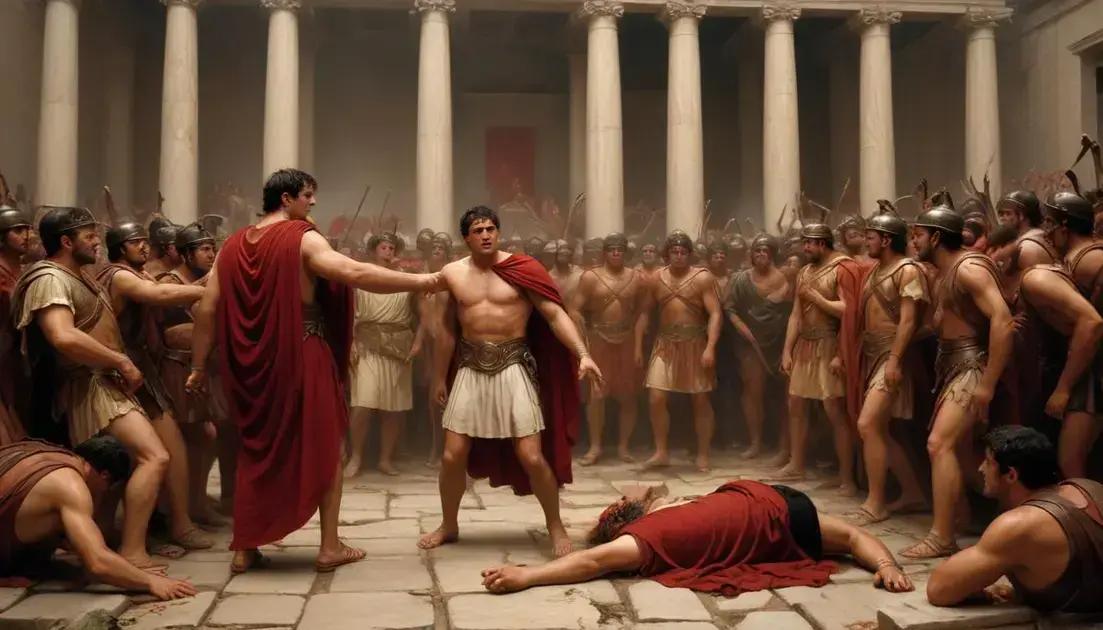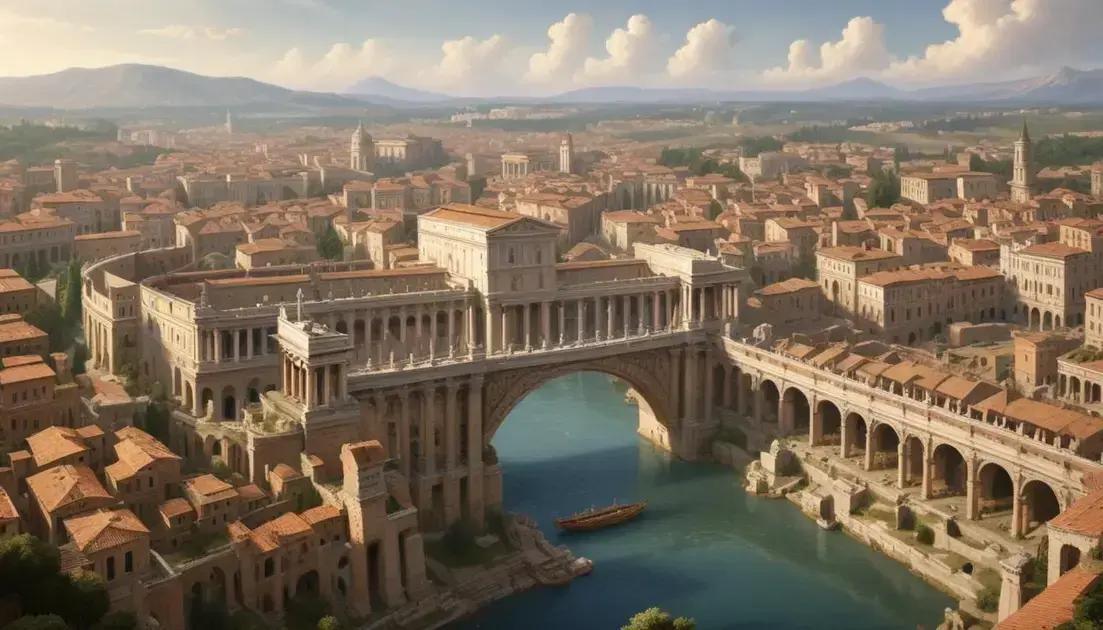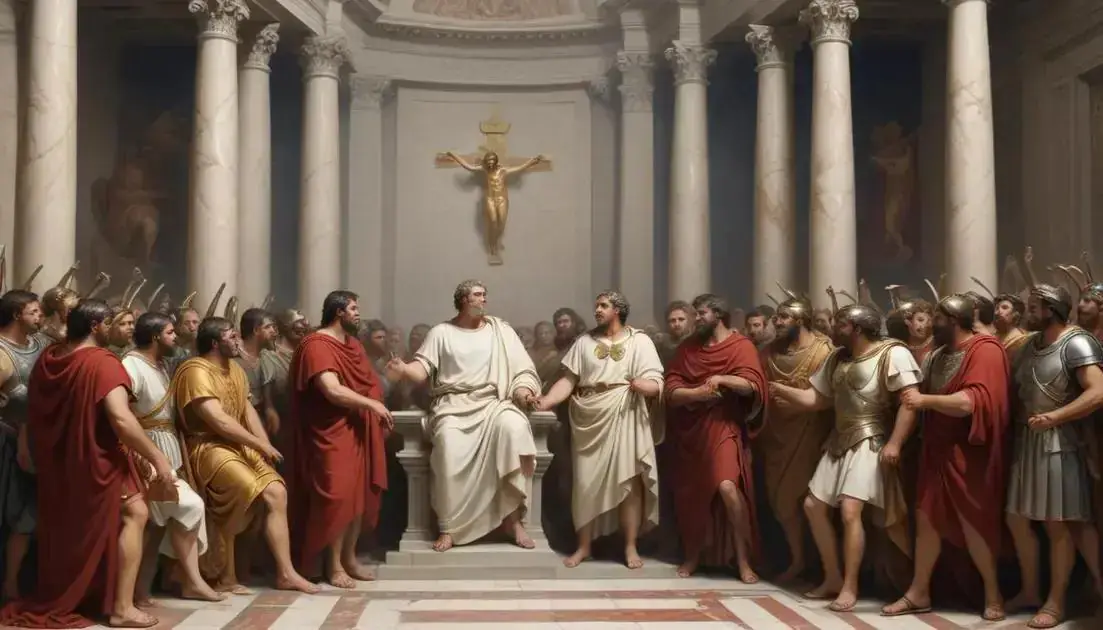
Nero’s Persecution: Christians Accused and Emerging Churches
Nero’s Persecution of Christians began in 64 AD after the Great Fire of Rome, leading to severe consequences for early believers. Many Christians faced unjust accusations, torture, and death, which forced them to form emerging churches in secret. These communities became vital for fostering faith, unity, and resilience amid persecution, providing support and inspiration during harsh times. The legacy of these early Christians and their courage continues to influence modern beliefs and practices.
Nero’s Persecution marked a dark chapter in Christian history, igniting fear and resilience among believers. What does this mean for our understanding of faith today?
Introduction
After the Great Fire of Rome in 64 AD, Nero’s Persecution began, leading to havoc for early Christians. Many were accused of causing the fire, facing harsh consequences. It’s important to understand how this persecution affected the growth and resilience of the Christian communities.
The Accusations Against Christians
Nero needed someone to blame for the devastating fire. Christians, seen as outsiders, became easy targets. This led to many unfair arrests and even executions. The public sentiment turned against them, making life very difficult.
Impact on Early Christian Communities
The persecution forced many Christians to go underground. They had to meet in secret and share their beliefs quietly. Despite the danger, their faith grew stronger. This was when the idea of martyrdom became powerful in the community.
Emerging Churches During Persecution
As Christians faced persecution, new groups began to form. These emerging churches became safe havens for believers. They encouraged each other during these tough times and spread their beliefs further.
Witnessing the struggles of their fellow believers inspired many to join these communities. Even in fear and danger, their faith united them and helped grow the church.
Background of Nero’s Persecution
In 64 AD, a massive fire broke out in Rome. It destroyed much of the city and caused great chaos. Many people were angry and scared, wanting answers about the fire. That’s when Emperor Nero stepped in. He needed someone to blame for the disaster.
Nero chose Christians as the scapegoats. He accused them of causing the fire. This was a big mistake. Christians were already seen as outsiders. They had different beliefs and practices, which made them targets.
The accusations against Christians led to terrible consequences. They faced arrest, torture, and even death. Nero’s rule did not help calm the fear. Instead, it made things worse for those who believed in Christ.
The Roots of Tension
A growing divide existed between Christians and traditional Roman beliefs. Many Romans viewed Christianity as a threat to their culture and values. They thought Christians were disloyal to the emperor and the gods.
This atmosphere of fear allowed Nero to act against Christians. His brutal response aimed to silence dissent and control the narrative about the fire. Sadly, it fueled greater persecution and suffering for many innocent people.
Impact on Early Christians
The impact of Nero’s Persecution on early Christians was enormous. Fear spread quickly through the communities. Many faced danger simply for their beliefs. The persecution forced Christians to adapt and change how they worshipped.
With public gatherings unsafe, many Christians began to meet in secret. They held ceremonies and shared teachings in hidden places. This secretive approach built a deep sense of community among believers.
The Rise of Martyrdom
During this time, the idea of martyrdom became very powerful. Christians who died for their faith were seen as heroes. Their stories inspired others to stand firm in their beliefs, even when faced with death.
These martyrs became symbols of faith and courage. They showed that belief in Christ was worth the suffering. As their stories spread, more people were drawn to Christianity.
Strengthening of Faith
Despite the danger, many Christians found their faith growing stronger. They supported one another in tough times. This bond made the early Christian community resilient, helping it to survive and thrive.
The challenges they faced helped shape the identity of the church. Today, we remember the bravery of these early Christians. Their faith in the face of persecution played a key role in the growth of Christianity.
Rise of Emerging Churches
The rise of emerging churches during Nero’s Persecution was a remarkable response to oppression. As Christians faced increasing danger, they found new ways to gather and share their faith. These churches allowed believers to come together in secret.
Many Christians started to form small communities. They were safe spaces for worship and support. In these gatherings, members shared scripture and encouraged one another. This helped strengthen their faith during tough times.
Characteristics of Emerging Churches
Emerging churches often had a few common traits. They valued community above all. Members created strong bonds and relationships. This was crucial for survival and comfort.
These churches emphasized inclusivity. Anyone seeking faith was welcome. They reached out to the marginalized and those in need. This openness helped the churches grow quickly, attracting more followers.
The Role of Leadership
Leadership in these new churches came from passionate believers. Many leaders had personal experiences of persecution, which made them empathetic. They guided their communities with care and understanding.
Church leaders provided teachings that encouraged resilience. They inspired hope in their congregations. Even in fear, their messages motivated Christians to stand firm in their beliefs.
The emerging churches became a lifeline for many. They fostered faith and courage among Christians facing persecution. The legacy of these communities influences churches today.
Conclusion
The impact of Nero’s Persecution on early Christians was profound and far-reaching. Many faced severe trials, yet their faith grew stronger. The experience of suffering became a powerful tool for community building.
Emerging churches provided spiritual refuge. They fostered unity and resilience among believers during dark times. These communities thrived, despite the challenges they faced.
The courage of early Christians inspires faith today. Their stories of perseverance remind us of the power of belief and the strength of community.
Conclusion
In conclusion, Nero’s Persecution had a lasting effect on early Christians. Despite facing great danger, they found ways to strengthen their faith and build communities. The rise of emerging churches showed how believers could come together, even in secret. These groups created a sense of belonging and support that was crucial during tough times.
Their stories of bravery and resilience continue to inspire us today. Understanding their struggles helps us appreciate the strength of faith and community. As we reflect on this part of history, we see how powerful belief can be, especially when people unite in the face of adversity.


